265 CD / Johann Sebastian Bach: Partitas Part 1 BWV 825, 826, 830
Description
There is one cycle of Johann Sebastian Bach’s keyboard works that Evgeni Koroliov has not yet recorded and that’s the Partitas. Part 1 is out now with BWV 825, 826 und 830. Because Koroliov takes his time, they don’t fit onto one CD, but that’s no real loss for the listener. As is often the case with TACET, you pay for one CD but get 2.
Composers such as Ligeti and Kurtág have praised Koroliov’s Bach interpretations, as have many reviewers the world over as well as countless listeners. At a time when many people have to live in isolation, separated from family and friends, this music is refreshing to the soul. No tinkling on the keyboard, no drama; instead, reflection and immersion in the beauty of the detail and of the whole. You enter into an intimate dialogue with Bach through the medium of Koroliov and you become completely absorbed in the interaction between these two artists. There’s no better way to pass the time.
6 reviews for 265 CD / Johann Sebastian Bach: Partitas Part 1 BWV 825, 826, 830
You must be logged in to post a review.


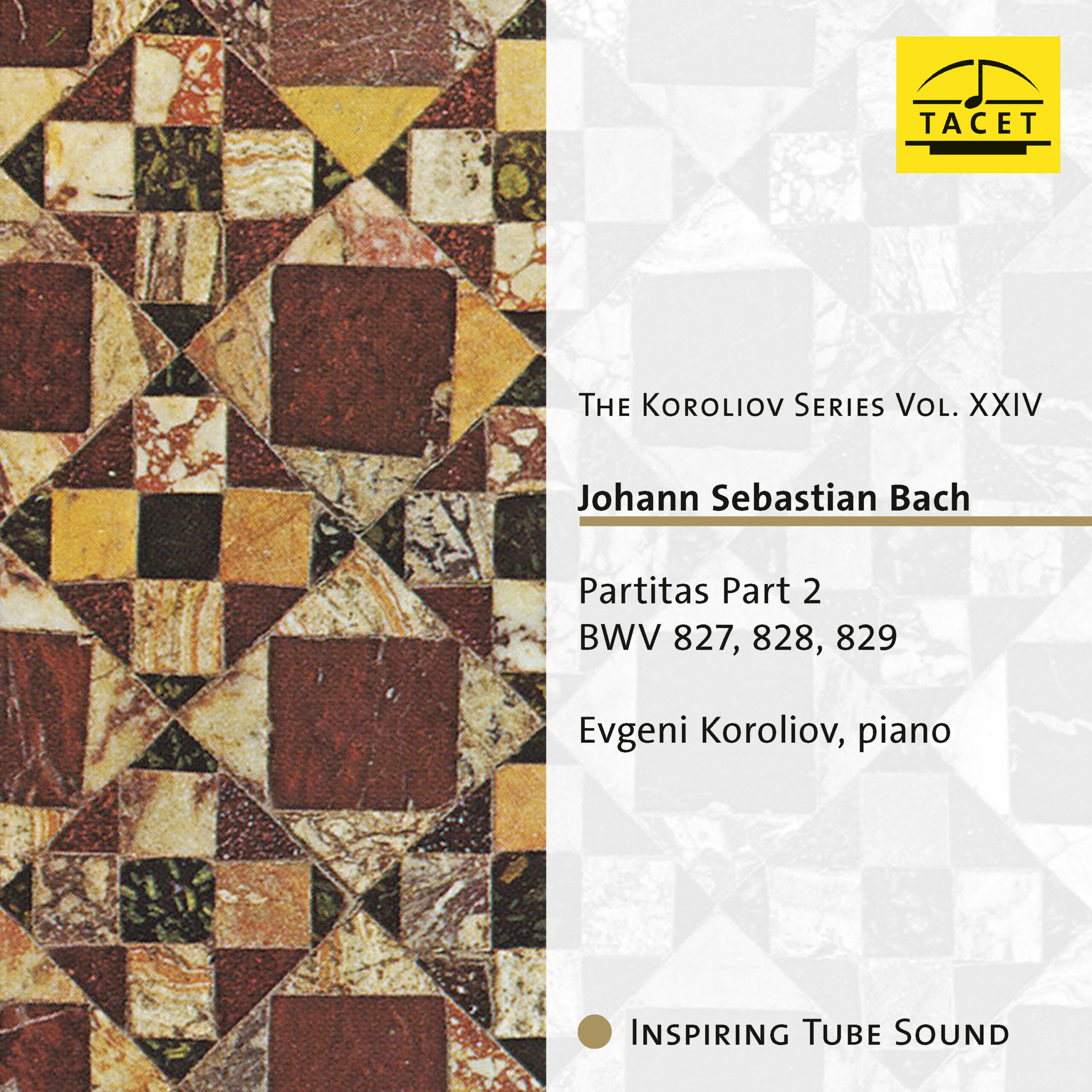
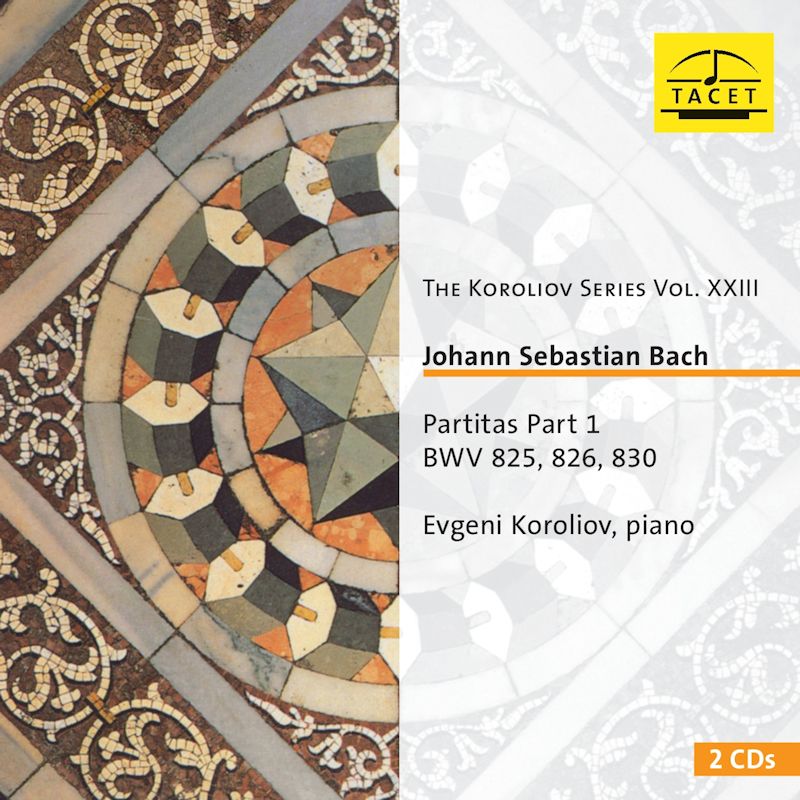
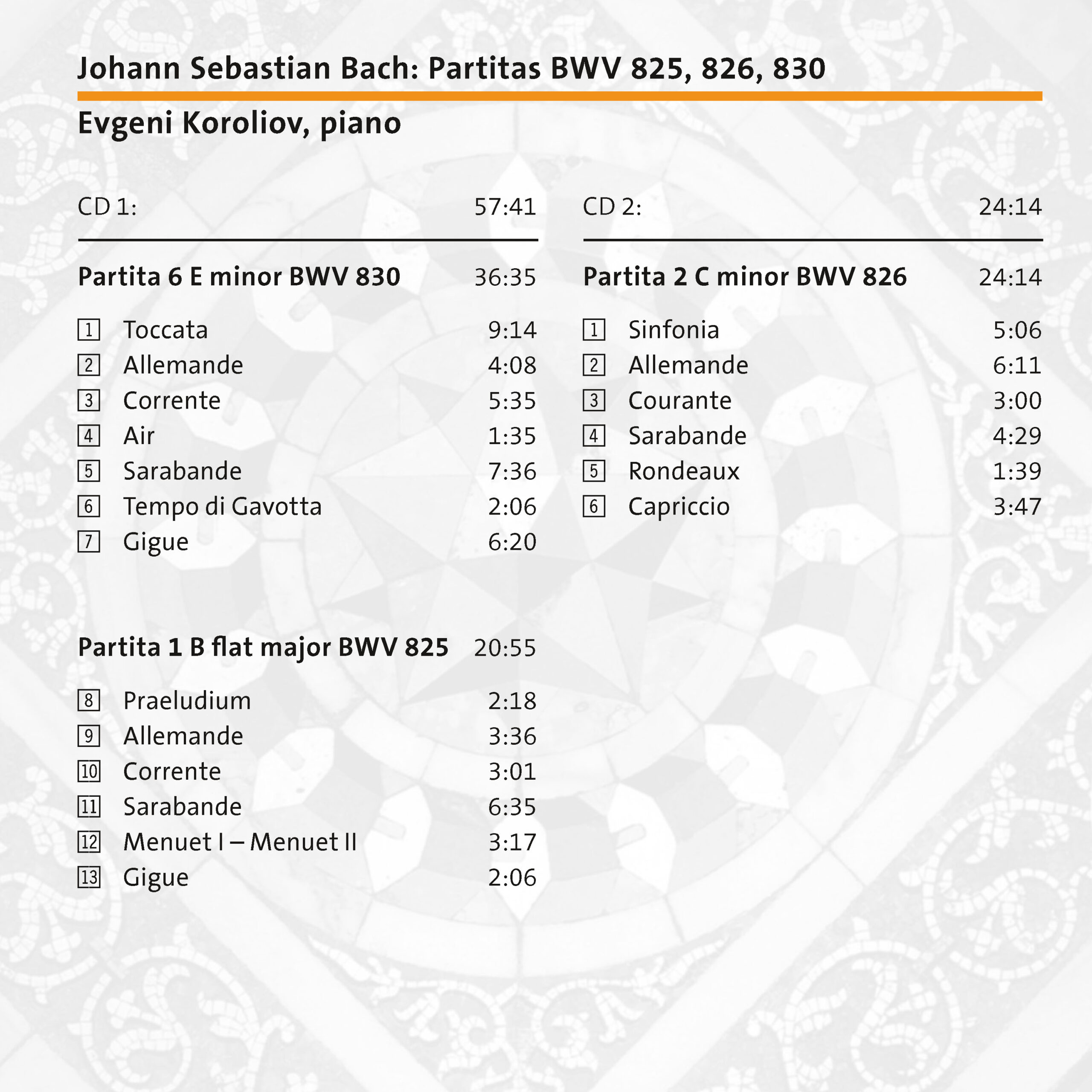




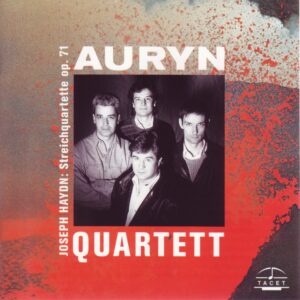
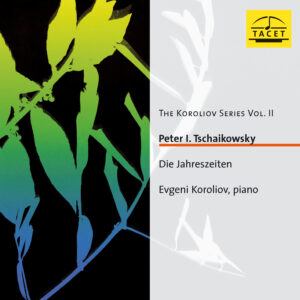
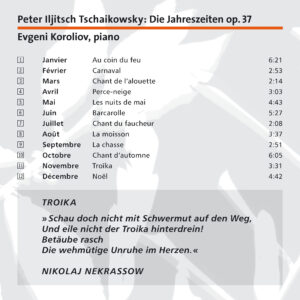
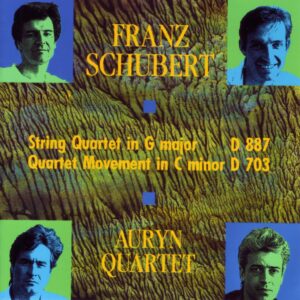
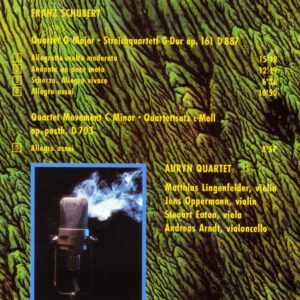
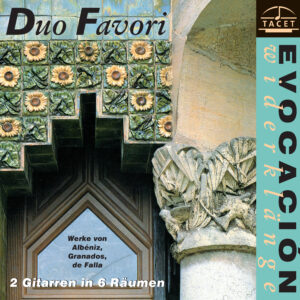
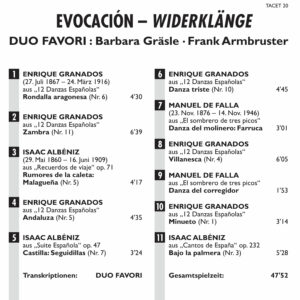
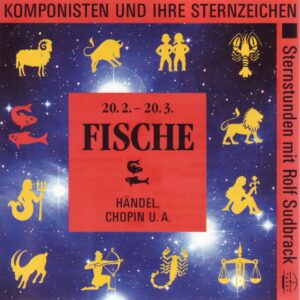
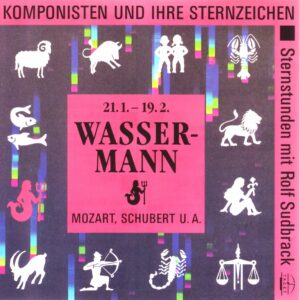
hören & fühlen –
–> zur Rezension auf „hören & fühlen
Diapason –
(…) Chez Evgeni Koroliov, la suite de danses baroque s’est éloignée de la salle de bal comme du salon pour s’en aller vers la chapelle. Savourée (ou méditée) à des tempos qu’on pourra dire de sénateur, chaque partita trouve ici un cheminement spirituel. Le refus des extrêmes, la pédale parcimonieuse voire absente, un contrôle aussi absolu de la polyphonie et de l’agogique pourraient signifier de la raideur ou de la froideur. Non pas. Tout au contraire, quoique guère accentuée, la vie métrique est bien là, et même à la française quand il le faut, et avec même des agréments ajoutés, jamais gratuits, toujours organiquement intégrés au discours et prenant leur juste part à une rhétorique dont le registre est sans conteste l’élégiaque. (…)
Paul de Louit
_______________________________________
(...)In Evgeni Koroliov's work, the Baroque dance suite has moved away from the ballroom and the salon towards the chapel. Savored (or meditated) at tempos that could be described as senatorial, each partita finds a spiritual path here. The refusal to go to extremes, the sparing or even absent pedal, such absolute control of polyphony and agogics could mean stiffness or coldness. Not so. On the contrary, although hardly accentuated, the metrical life is there, even in the French style when necessary, and even with added embellishments, never gratuitous, always organically integrated into the discourse and taking their fair share in a rhetoric whose register is unquestionably elegiac. (...) Paul de Louit
Paul de Louit
Audio –
(...) full of poetry and beauty in immense richness of detail without imposed drama, without backtracking, without rushing. (...)
Lothar Brandt
concerti –
--> original review
Evgeni Koroliov became famous with his recording of Bach's "The Art of Fugue" in the early nineties. For György Ligeti, it was the record he would take to "a desert island" and listen to again and again "until his last breath." Since then, in between his other projects, Koroliov has repeatedly recorded Bach's piano works in cycles. He has waited a long time to record the six Partitas, which are among Bach's most popular piano works, but now presents the first half, Partitas No. 1, 2 and 6, on his preferred record label, Tacet. What can one say: the way Koroliov plays this music has something definitive, unassailable. Everything is just right here: the relaxed ductus, the great breath, the balance of the voices, the ornaments embedded in the flow of the music. Whoever is looking for a quasi "completed" Bach: Here it is.
Frank Armbruster
Pizzicato –
--> original review
Koroliovs großartiger Bach
Tacet’s Koroliov Series has now reached its 23rd volume. And it is still worthwhile to listen to what this pianist has to say. The listener experiences wonderful interpretations of the Partitas Nos. 1, 2 & 6. At first glance it looks as if Koroliov is fully in the line of the Russian school. But one soon realises that although the pianist prefers a rich and sonorous sound, which would have fitted Beethoven well, he always concentrates on the accurate characterization of the individual movements. Thus, many things appear elegantly virtuoso as in Chopin or nuanced in colour and impressionistic as with Debussy. The pianist, who is now 71 years old, is technically excellent, he plays with concentration, precision and dynamism and thus this Bach harbours a whole universe in which composers such as Beethoven, Chopin or Debussy are guests and show what a great influence Bach’s music had on all the composers who followed him. It should be noted that Koroliov’s interpretations follow a well thought-out and conclusive concept, which in addition allows for all the emotionality and unique intimate moments of these partitas. In this sense we are already looking forward to the next CD with Koroliov’s Bach Partitas 3, 4 & 5.
Alain Steffen
Klassik heute –
--> original review
Why does the reviewer's heart leap for joy when a CD by pianist Evgeni Koroliov is announced to him? Because the artist, who was born in Moscow in 1949 and has lived in Hamburg since 1978, prepares his programs with infinite care and almost loving devotion, because this artist does not highlight himself but the composer played in each case, because he seems to transform, as it were, into the composer played. The reverence for the work is transformed into an interpretation that aims at the innermost part of the work.
Music for the desert island
Booklet lyricism can be arguably panegyric at times, but the reviewer unreservedly agrees with Hungarian composer György Ligeti: "If I may take only one work with me to a desert island, I would choose Koroliov's Bach, for this is a record I would listen to again and again, starving and dying of thirst, until my last breath." So Ligeti is quoted in the booklet.
Man kann Bach trällern, man kann Bach stampfen, lyrisch opulent spielen oder vergeistigt strukturell, man kann Bach wie eine Nähmaschine nadeln oder wie in einem Sturmlauf durchrasen – oder wie Koroliov spielen. Er vereinigt Kontrapunktik mit Melodik, er verbindet stringente Klarheit mit farbsattem Klang, er schafft klanglich vollkommene Ausgewogenheit. Seine durchdachte Phrasierung, diese sorgfältig geplante Abfolge von Gewichtung und Abklang, die bisweilen an ein Orgelspiel denken lässt, ist eingebunden in die logische Prozessstruktur: klingende Logik, logischer Klang.
Abundant discoveries
This double CD with three Bach partitas is rich in musical discoveries:
Koroliov places the conclusion at the beginning, starting with the crowning achievement: the E minor Partita No. 6 is the most elaborate and ambitious of the six partitas. The three-part fugue of the Toccata takes on something pensive, even dreamy, in Koroliov's performance, also through the careful use of the pedal; the melismatic Allemande gives one a sense of why Chopin was so enthusiastic about Bach throughout his life; the Corrente, rhythmically floating through elegant syncopation, convinces with delicately plucked but always jostling virtuosity. Koroliov takes the Sarabande not as pathetically as Murray Perahia (2009) and not as energetically explosive as Igor Levit (2014), but pensively questioning, as if listening inwardly, the ornamental melos occasionally wandering fantastically: a deep sound mystery.
Beautiful delicate singing
And always Koroliov's tone remains fully luminous and yet wonderfully clear. The Sarabande in the Partita No. 1 in B-flat major also strides thoughtfully, structured by deliberately delicate, as if gently plucked bass notes. Koroliov can also show off virtuosically, sparkle and glitter as in the rushing Gigue, but always remains light-fingered.
Den ersten Satz der Partita Nr. 2 c-Moll, die Sinfonia, beginnt Koroliov gravitätisch, kostet dann wunderschön zart singend das Ariose des folgenden Andante aus und lässt diesen Satz schließlich in die vitale, dabei aber immer spielerisch-grazil gespielte Fuge münden. Aufschlussreich ist ein Vergleich mit einer Aufnahme von Martha Argerich (1980): Die beginnt mit feurig-fiebrischer Wucht, durcheilt dann ziemlich rasch das Arioso und wird dann noch schneller und fast rasend in der Fuge: ein aufs Ende zielende, also final ausgerichtete Darstellung, während Koroliov die Gleichgewichtigkeit aller drei Teile betont und damit eine sorgfältig austarierte Gesamtarchitektur schafft. Die Sarabande ist eine zarte Innerlichkeits-Etüde, heiter gehüpft kommt das diese Partita abschließende Capriccio daher in einer „humoristischen Leggerezza“ (Werner Oehlmann): Lieben Sie Bach? Dann hören Sie Koroliov!
Outstandingly the singing tone of Koroliov can unfold in the Jesus Christ Church in Berlin-Dahlem and just as outstandingly the tone of the Steinway is captured. All in all, truly a double CD for the island!
Rainer W. Janka